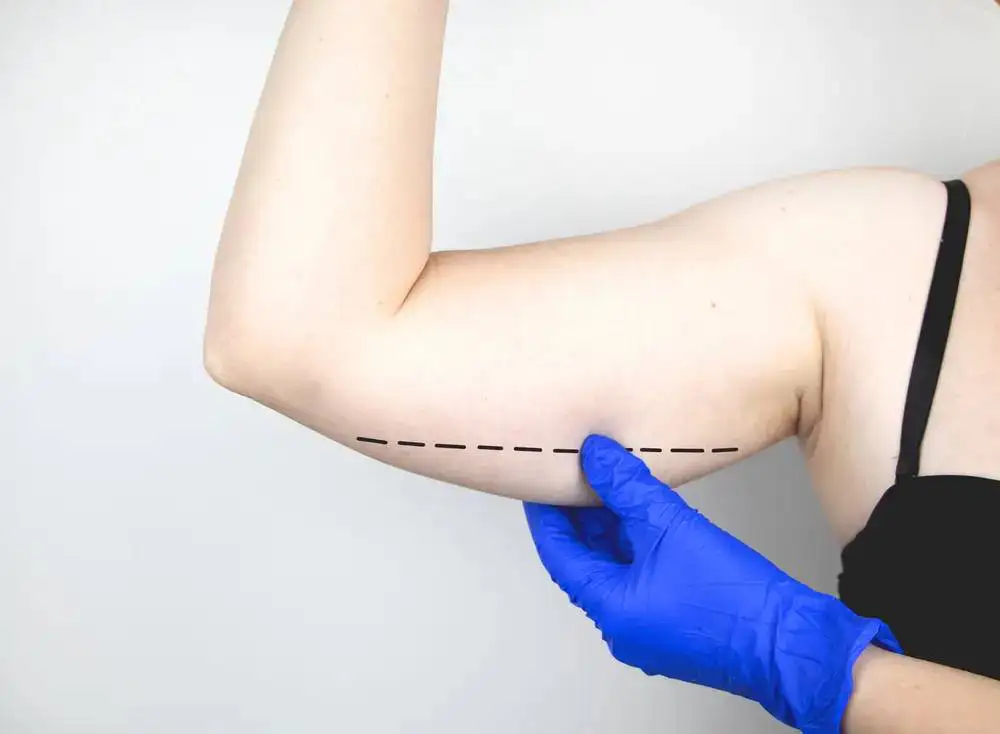Arm Lift (Brachioplasty)
Our arm lift service reshapes the upper arms by removing excess skin and, where needed, fat, helping to reduce sagging and create a more streamlined contour that feels more in tune with your weight and fitness efforts.
Mr Andrew Pieri and his team offers brachioplasty to patients troubled by loose or “wobbly” skin of the upper arms, often following weight loss or ageing. With careful planning of scar placement and contour, he aims to refine the arm shape, improve comfort in clothing and restore confidence in baring your arms.
What is an Arm Lift?
An arm lift, or brachioplasty, is a procedure to remove excess skin and sometimes fat from the upper arms, typically from the armpit to the elbow. Even with good diet and exercise, stretched or lax skin may not contract, leaving a draped appearance that some people find difficult to live with.
During brachioplasty, an incision is made along the inner aspect of the upper arm, sometimes extending into the armpit, where it is less visible when the arms are by your sides. Excess skin and underlying fat are removed, and the remaining tissues are tightened to create a smoother, firmer arm contour. Liposuction may be combined with skin removal in some cases to refine the shape.
Although the procedure leaves a scar along the inner arm, most patients feel that the trade-off is worthwhile for the improvement in contour, particularly when scars have matured and faded.

PRICE GUIDE
What to Expect from Arm Lift Surgery
Consultation & Preparation
-
Assessment & Planning:
Mr Andrew Pieri will assess the quality of the skin and soft tissues of your upper arms, as well as your overall weight stability and health. Photographs and measurements support planning of incision placement and the amount of tissue to be removed. The balance between scar length and contour improvement will be discussed in detail. -
Pre-operative Guidelines:
You will be advised about stopping smoking, as it can significantly affect wound healing. Certain medications and supplements may need to be avoided prior to surgery. As brachioplasty is usually done under general anaesthetic, you will be given clear instructions about fasting and what to do with your regular medications. -
Practical Arrangements:
You should arrange for someone to collect you after surgery and help at home initially, as lifting and reaching overhead will be limited. Loose, front-opening clothing will be more comfortable and easier to put on without stretching the arms.
Surgery & Immediate Aftercare
-
Anaesthesia & Procedure:
Arm lift surgery is carried out under general anaesthetic and usually takes 1.5–3 hours. Incisions are made along the inner aspect of the upper arms, and excess skin and fat are removed. In some cases, liposuction is used to contour the arms. The wounds are closed with dissolvable sutures beneath the skin, and dressings and compression garments are applied. -
Dressings & Comfort:
You will wake with your arms in light dressings and a supportive garment or bandages to limit swelling. Mild to moderate discomfort, tightness and some bruising are normal and managed with pain relief. You will be advised to keep your arms elevated when possible to help reduce swelling.
Recovery, Results & Follow‑Up
-
Early Recovery (Weeks 1–2):
You should avoid heavy lifting, pushing and pulling in the early phase of recovery. Gentle movements of the elbows and shoulders are encouraged to reduce stiffness, following the team’s guidance. Dressings will be checked, and any external sutures or clips removed at your follow-up. -
Resuming Activities:
Most patients return to desk-based work after about 2 weeks, depending on comfort and the nature of their job. Strenuous exercise, weight training and activities that place strain on the arms should be avoided for at least 6 weeks. -
Healing & Outcome:
Swelling gradually settles over several weeks. The arms usually feel slimmer and less heavy once healing is established, and clothing often fits more comfortably. Scars are initially firm and red, then gradually soften and fade over time. Scar care and massage advice will be provided to help optimise the result. -
Follow-Up Appointments:
You will be reviewed in the early weeks after surgery and again at 3–6 months to assess healing and fine-tune aftercare advice.
Enquire about this procedure
Please note that while you’re on Mr Andrew Pieri’s official website—where he oversees standards and reviews every enquiry—certain procedures are carried out by his highly trained surgical team. When you submit your details below, your enquiry will be directed to the appropriate team member, who will contact you promptly to discuss your needs and arrange your consultation. Rest assured that Mr Pieri personally monitors all enquiries to ensure you receive the same exceptional care and expertise for which his practice is known.


